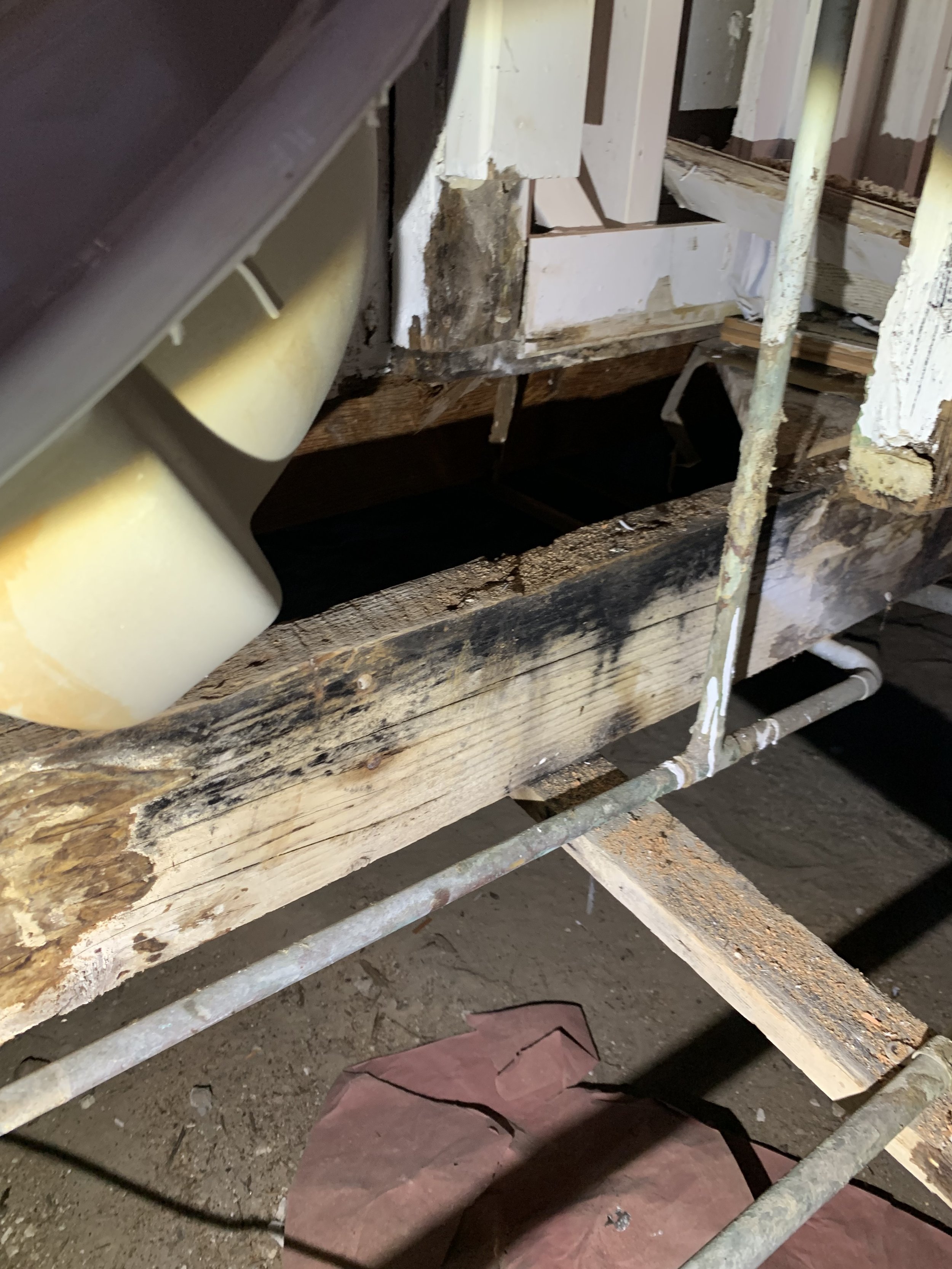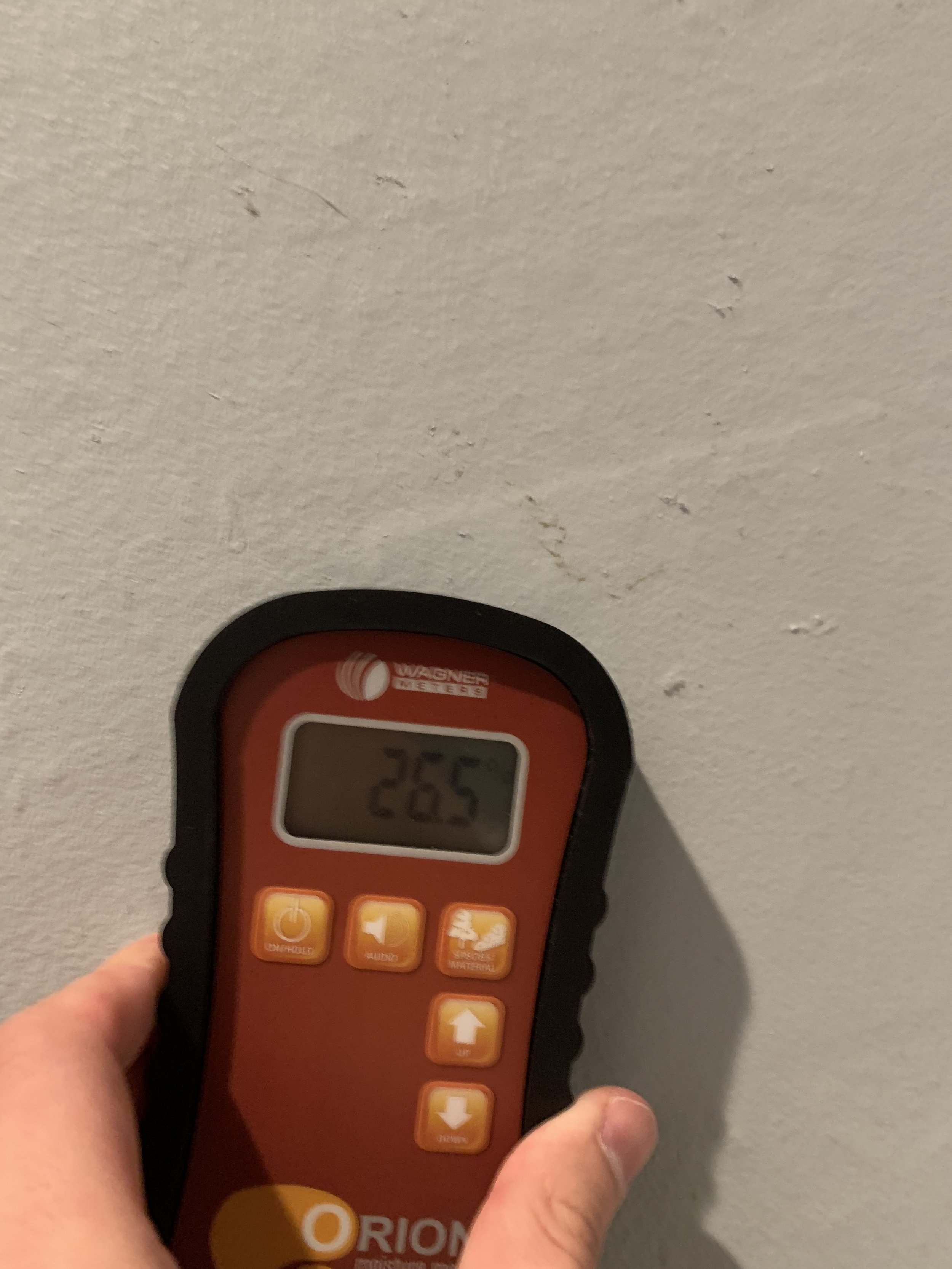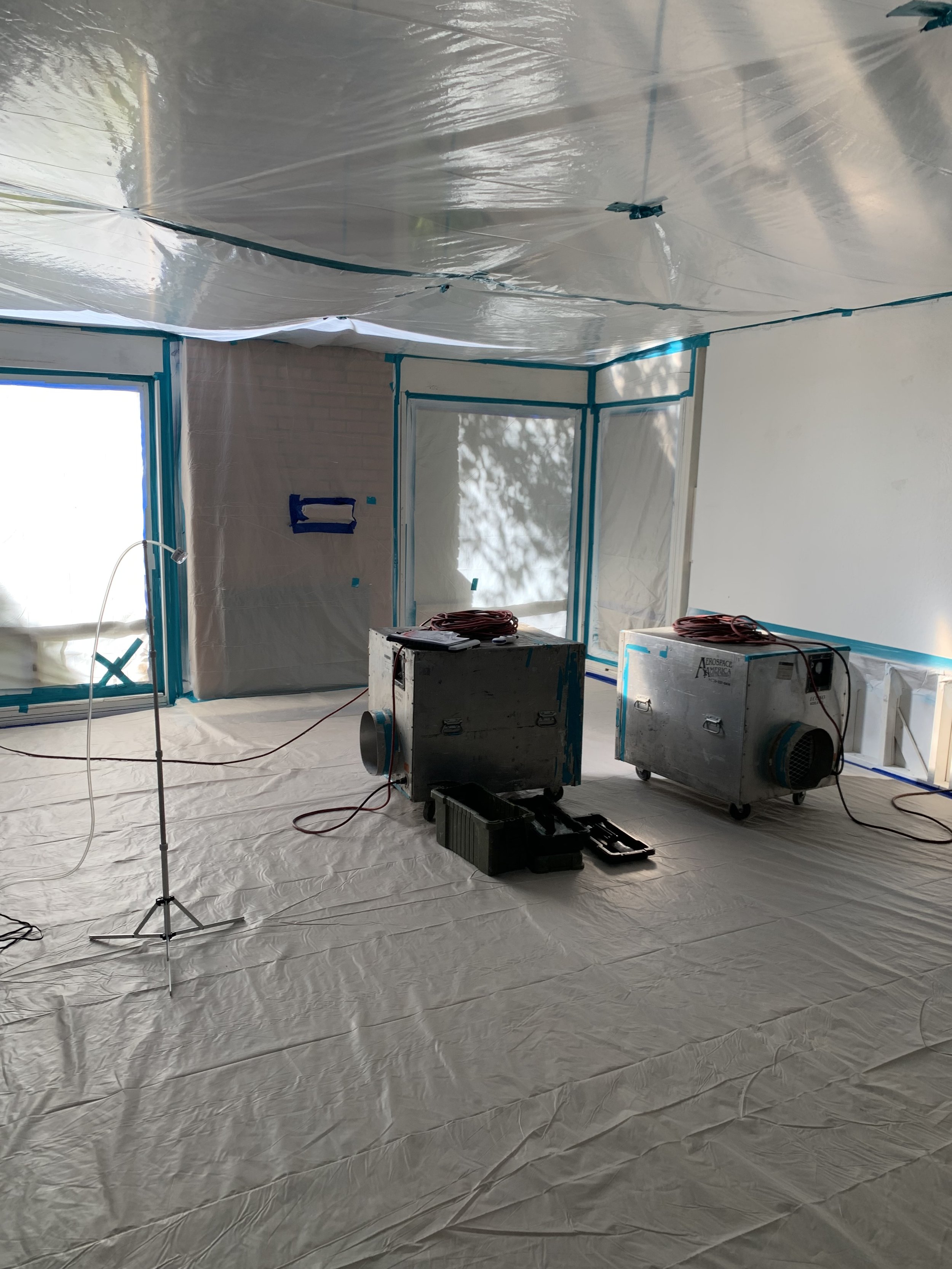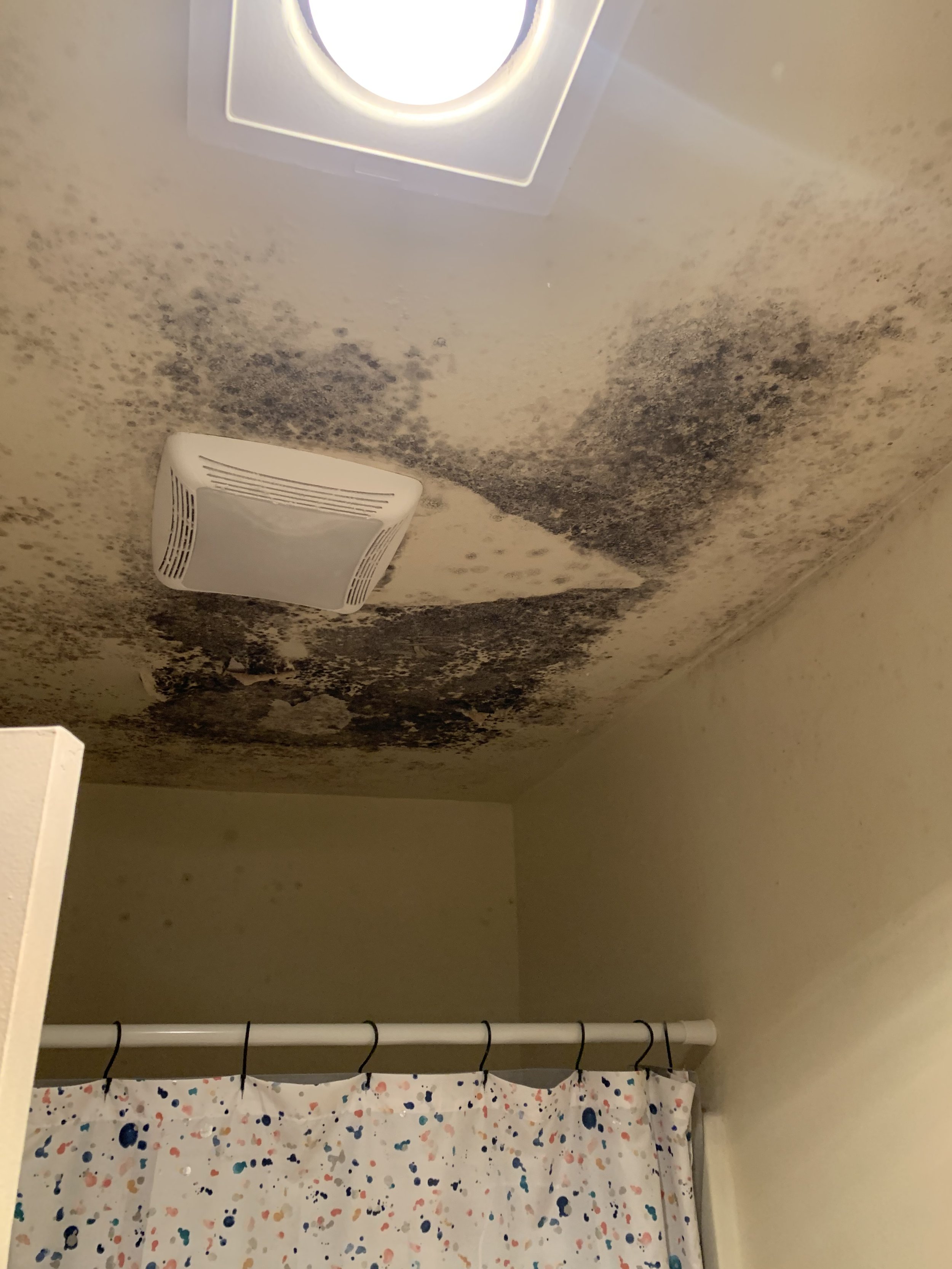Mold Frequently Asked Questions
Example of a moisture reader being used.
Can I have a mold problem if my house is only two years old?
Actually, given the proper conditions, mold colonies can appear within twenty-four to forty-eight hours. There have also been incidents where wood building products were contaminated with mold prior to being fastened in place at the home construction site.
Why can't I proceed directly to the remediation of the mold?
You can, but we recommend a mold inspection that includes moisture measurements of floors, walls, and ceilings. Any materials with a high moisture content can indicate hidden mold growth. Comparison of air and mold samples can also indicate hidden mold, as well as reveal what kind of mold you are dealing with. We will be happy to discuss different mold inspection options that best fit your needs and budget.
Should a mold inspection be included in the list of pre-purchase property inspections?
A mold inspection can provide invaluable information about any structural investment you are considering purchasing. Home inspectors sometimes report mold when it is visible, but they typically do not have the aid of specialized equipment that reveals hidden problems (such a moisture readers). And, through air sampling, the Certified Mold Inspector can alert you if there is a mold-related indoor air quality problem.
What are some of the features of the mold inspection?
A Certified Mold Inspector will conduct an indoor environmental visual examination (survey) that is enhanced by state-of-the-art devices. Some of these devices measure structural moisture (moist conditions encourage mold growth), air particulates (high particulate counts can be identified with an air sampling device), and thermal variations (cool areas may have a high moisture content). The enhanced examination thus helps pinpoint otherwise invisible moisture intrusion areas where hidden mold may exist (example: inside walls). Mold testing is also offered by the Certified Mold Inspector and samples are collected by following scientific protocols (there is more on mold testing in the following answers). You also receive a written report with recommendations for your specific situation.
Example of Testing After Removal/Remediation of Mold
How can I benefit from mold testing?
Mold sampling (and testing) will supply answers to questions like: Are mold spore counts higher in my indoor air than naturally occurring mold spore counts outside? What kind of mold (genus) is growing in my home? Is the discoloration, found on the floor (or attic) joists, mold? Sample analyses can also assist your healthcare professional in identifying medical problems that could be related to mold. And, should legal action become necessary, "chain of custody" protected samples would be essential for providing evidence of mold contamination.
What standards exist for evaluating indoor airborne mold quantities?
—Indoor mold spore counts should be similar to those of the outdoor air in your immediate vicinity.— This axiom is supported by scientific principles and approved by recognized authorities of air quality. These authorities include, but are not limited to, the American Conference of Governmental Industrial Hygienists; the New York City Department of Health & Mental Hygiene, Environmental & Occupational Disease Epidemiology.
How do I know if the mold in my house is toxic to my family and my pets?
It is difficult to be absolutely certain. Most mold sampling analysis does not identify mycotoxins, but it does reveal the mold genus. Genus results are compared to the list of molds that have the potential to produce mycotoxins.
How long will it take to receive testing results?
Collected samples will be promptly sent to an accredited microbiology laboratory for analysis. Normal turn around time for lab results is the next business day.





